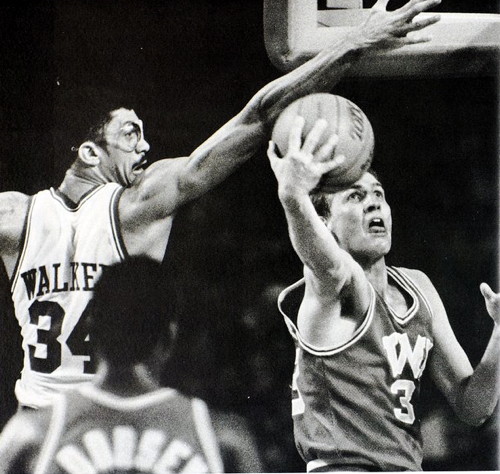First, last night's game was disappointing because, in a complete reversal of the Virginia Tech game, the effort was there defensively but we simply could not hit the broad side of a barn when we shot the ball. We shot 21 of 71 overall (<30%) and a miserable 8 of 36 from three (22%). QJ in particular had a disastrous shooting night - 3 of 21 from the field and 1 of 11 from range (he also did not get the start, which was peculiar). That .143 mark is his third-lowest single-game shooting percentage when taking at least ten shots (Clemson and Yale last season were the others). His shooting touch has been so off this season in general and it's quite honestly inexplicable. Actually he was solid against Maryland, Navy, and Mercer, but in the past two games QJ is shooting less than 18%. You can attribute this to good defense, but judging by the shots he's taking you can see why he's doing so poorly. I counted at least four three-point attempts from 4ft or more behind the arc. Is it a trend? Probably not. Hopefully not. But it is worrisome when you're point guard can't find a consistent scoring rhythm. Notice that Rodney never had these issues last year. His stroke was always there from Game 1 to 35. That's the difference between this year's team and this one.
Anglade had a solid game with 12 points on 6 of 10 shooting and 7 rebounds. Trey, who scored 8 points and grabbed 7 boards, was the only player on the team that made more than one three pointer (he was 2 for 3). The fact that we had only two double-digit scorers, neither of which scored more than 15 is depressing. Christian Burton once again got decent playing time, and used it wisely. He hit one three, got 2 boards, an assist, and a steal. Another solid effort from the only non-scholarship player on the squad.
We can now only be thankful that this, the most grueling of non-conference schedules perhaps in the Duggar Baucom era, is done. A Military Classic in West Point, seven road games (essentially eight), and only four at Cameron is tough. Plus, four guarantee games and only two non-DI games are an oddity and put us at a net disadvantage in the W-L column. But valuable experience was gained from playing these games and conference play is all that matters. But overall, there were only two games this season in which we severely underperformed: vs UNCW and @ Navy. And I suppose you could add the first half of the Virginia Tech game. We are where we should be: 5-8, 1-1 in the SoCon. But we most certainly aren't where we could be.
Looking ahead, a trip to East Tennessee State tomorrow followed by a home game against Mercer are important. We could come out of that stretch 1-3 or 3-1, based on the erratic play we've seen so far. Ideally you need to split these two games, because after that we have a three-game road trip against SoCon powerhouse Wofford (who beat NC State earlier in the year), Furman, and UNC Greensboro. Shortly after that it's all home cooking: five straight home games from late January to early February, including El Cid, Western Carolina, and Furman. By then we will have played nine league games, so a record of 5-4 would be ideal. 6-3 is great. 4-5 at a minimum. 3-6 is not acceptable.
The good news is that there are four truly bad teams in this league that we could easily take advantage of: El Cid, Western Carolina, Furman, and Samford. These are eight games that if we take care of business we will win 90% of the time. Again, nothing is guaranteed. But if you can get through these teams then you might just have a shot to hang with the big boys. We'll see how it unfolds starting Friday.









